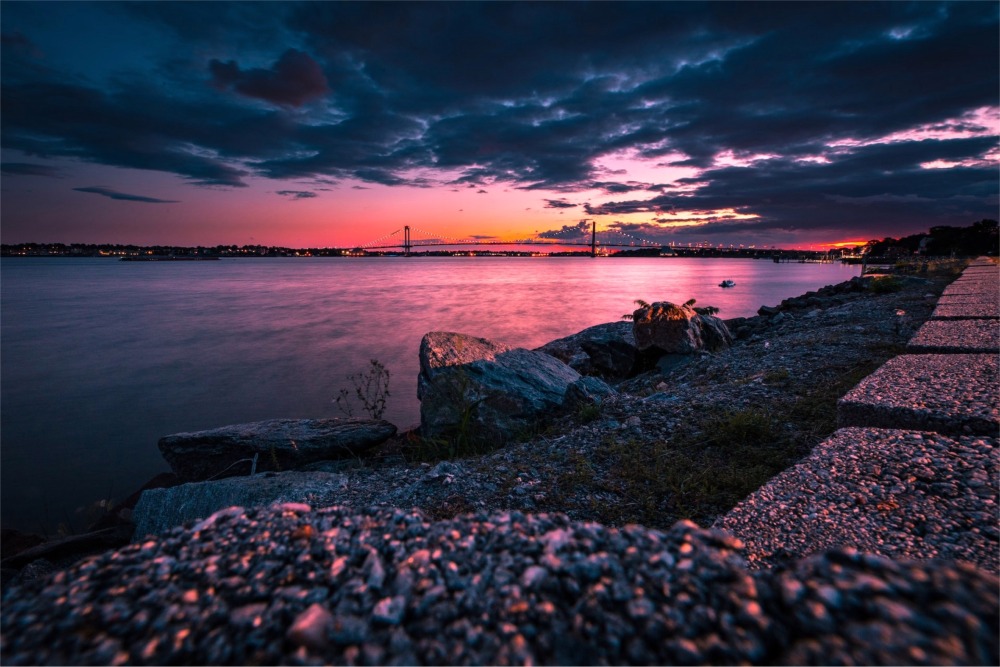Bronx-Whitestone Bridge
Home > New York State Photographs > New York > Bronx-Whitestone Bridge

The air was warm and humid as the sun slowly set behind the skyscrapers on the far horizon. The sky was painted with a mixture of hues ranging from pink to orange, the clouds blending with the waters below to create a stunning array of colors. The beauty of the landscape was truly breathtaking.
The Bronx-Whitestone Bridge stood in front of them, illuminated by the setting sun in all its glory. The bridge's two enormous piers stretched out into the East River, the waters dyed a deep pink and violet by the setting sun.
Behind the right pier, the Manhattan skyline stood tall, its buildings glinting in the fading light. To the left of the beach, a small fishing boat sat at anchor, bobbing gently in the water. The pebble beach in the foreground added a counterpoint to the magnificent scene in the background, creating a balanced composition.
The photographer had lucked out on this particular day — the lighting was perfect, the colors vivid and vibrant. He had found the perfect spot for capturing the beauty of the scene in all its glory. He could have stayed there all night, just taking in the view, but the setting sun meant it was time to leave.
He quickly snapped a few shots of the incredible landscape before him, capturing the moment forever. Then he turned away, feeling a strange sense of peace and contentment as he walked back along Schurz Ave., knowing that he had just taken one of his best photographs ever.
Bronx-Whitestone Bridge
The Whitestone Bridge, officially known as the Bronx-Whitestone Bridge, is a major bridge in New York City that connects the boroughs of Queens and the Bronx. It spans across the East River, providing an important transportation route for commuters and travelers.
The Whitestone Bridge was opened to traffic on April 29, 1939. It was designed by engineer Othmar Ammann, who is renowned for his work on several iconic bridges in New York City, including the George Washington Bridge and the Verrazzano-Narrows Bridge.
The bridge is a suspension bridge, characterized by its massive suspension cables and towers. It has a total length of approximately 3,770 feet (1,150 meters) and a main span of 2,300 feet (701 meters). The two suspension towers rise 377 feet (115 meters) above the water, making them prominent landmarks in the area.
The Whitestone Bridge features six traffic lanes, with three lanes in each direction.
As with many bridges in New York City, the Whitestone Bridge is a tolled crossing. Tolls are collected using cameras and E-ZPass readers mounted on overhead gantries, and the revenue generated from tolls is used to maintain and operate the bridge.
The bridge serves as a vital transportation link, facilitating the movement of people and goods between Queens and the Bronx. It eases traffic congestion on other nearby crossings, such as the Throgs Neck Bridge and the Robert F. Kennedy Bridge (formerly known as the Triborough Bridge).
It's worth noting that bridge infrastructure and toll rates may change over time, so it's always a good idea to consult up-to-date sources or local authorities for the most accurate and current information regarding the Whitestone Bridge.


